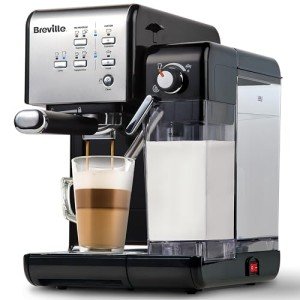9 Signs You're The Commercial Espresso Machines Expert
The Rise of Home Espresso Machines: A Comprehensive Guide
As coffee enthusiasts continue to look for fresh and flavorful brews in the house, the appeal of home espresso machines has actually risen in current years. No longer just the domain of cafes and cafe, these machines empower individuals to craft barista-quality espresso beverages from the convenience of their kitchen areas. This post will check out the different types of home espresso machines, their features, and factors to consider for selecting the ideal one. Furthermore, it will provide a choice of FAQs to assist prospective buyers make informed choices.
Kinds Of Home Espresso Machines
Home espresso machines can be categorized into several classifications based on their systems and user-friendliness. Each type has its unique features, pros, and cons.
Type
Description
Pros
Cons
Manual Espresso Machines
Needs the user to by hand manage the developing process, involving techniques like pulling a lever to develop pressure.
- Complete control over brewing procedure
- Compact style
- Requires skill and practice
- Time-consuming
Semi-Automatic Machines
Machine automates water flow and pressure, however the user still manages the dosing and duration of the brewing process.
- Balance of automation and control
- Versatile
- Learning curve for refining techniques
Totally Automatic Machines
Automates the whole brewing procedure, from grinding to brewing, frequently with programmable settings for personalized beverages.
- Extremely user-friendly
- Quick and hassle-free
- Less control over the brewing process
- Higher price point
Pill or Pod Machines
Uses pre-packaged espresso capsules or pods to develop coffee quickly and easily.
- Extremely easy to use
- Minimal cleanup
- Limited taste variety
- More costly per cup than ground coffee
Super-Automatic Machines
Combines functions of fully automatic machines with integrated mills, allowing users to brew whole bean espresso and milk-based beverages with one touch.
- All-in-one convenience
- Ideal for milk-based beverages
- Often the most pricey
- Can be bulky
Functions to Consider
When selecting a home espresso machine, potential buyers should think about the following features to ensure they select a machine that satisfies their needs:
Grinder Type:
- Built-in mills can supply fresher grounds but may require more upkeep.
- Different mills enable more personalization of grind size.
Pressure:
- Look for machines that produce a minimum of 9 bars of pressure, which is optimum for developing espresso.
Water Temperature Control:
- Machines with adjustable temperature settings allow for much better extraction of taste from beans.
Milk Frothing Options:
- Consider whether you desire a manual steam wand for frothing or an automatic milk frother for convenience.
Relieve of Cleaning:
- Machines with detachable parts and self-cleaning functions considerably decrease clean-up time.
Size and Design:
- Ensure the machine fits comfortably in your kitchen and aligns with your aesthetic choices.
Budget:
- Set a budget before starting your search, as rates can vary significantly from affordable models to high-end machines.
Advantages of Home Espresso Machines
Owning a home espresso machine uses many advantages:
- Cost-Effective: Over time, developing espresso at home can save coffee lovers money compared to frequent coffee shop check outs.
- Customization: Users can experiment with different beans, grind sizes, and developing strategies to find their perfect cup.
- Convenience: The capability to brew espresso any time removes the need to head out to a coffee shop, particularly helpful throughout late nights or mornings.
- Quality assurance: With a home machine, individuals have complete control over the quality of active ingredients and brewing procedures.
Disadvantages of Home Espresso Machines
Nevertheless, there are some disadvantages to think about:
- Initial Investment: High-quality espresso machines can be costly, requiring a significant upfront investment.
- Knowing Curve: Mastering the art of espresso brewing can take time and practice, which might be daunting for novices.
- Maintenance: Like any home appliance, espresso machines need routine cleansing and maintenance to make sure ideal performance.
FAQs
1. What is the very best type of home espresso machine for newbies?
Response: For beginners, a semi-automatic machine is often recommended as it provides a balance between control and automation, enabling you to find out the fundamentals without frustrating intricacy.
2. Just how much should I invest on a home espresso machine?
Response: Entry-level machines can begin around ₤ 100 to ₤ 300, while higher-end designs can vary from ₤ 500 to over ₤ 2000. It's vital to set a budget based on your expected use and desired features.
3. Do I require a different grinder?
Answer: While some espresso machines come with built-in mills, investing in a different grinder permits for higher modification and ensures much better quality grounds.
4. How often should I clean my espresso machine?
Answer: Cleaning frequency can differ by machine type, however it's generally advised to clean up the machine after each use and perform deep cleanings weekly or monthly, depending on usage.
5. Can I make milk-based drinks with any espresso machine?
Answer: Not all machines include milk frothing capabilities. If you delight in drinks like lattes or cappuccinos, try to find a machine with a steam wand or automatic frother.
Home espresso machines are transforming the method coffee connoisseurs enjoy their cherished brews. With click through the next web site and advanced features readily available in the market, there is something for everyone. Whether it's the joy of producing unique dishes or just appreciating the perfect shot of espresso, investing in a home espresso machine can enhance both the coffee-drinking experience and the lifestyle for coffee enthusiasts all over. As with any financial investment, it is essential to weigh the advantages versus the potential drawbacks and select a machine that perfectly fits both your way of life and preferences.
